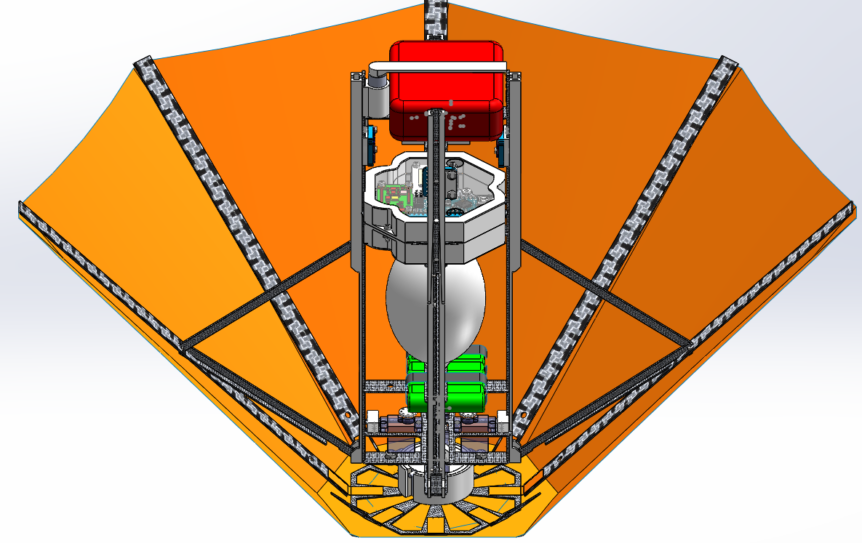While preparing our PDR, we had to finalize all components of our CanSat’s mechanical design. This led to multiple changes as we made sure all designs were ready to manufacture.
To meet our weight requirement of 500g, we switched structural components from aluminum to carbon fiber. These materials have comparable strength, but carbon fiber is about 40% lighter. We plan to purchase commercial carbon fiber sheets and have them cut to the shapes required; to avoid wasting expensive material, we will prototype our designs with laser-cut plastic before producing the final parts.
Preliminary testing found that our idea to build an inflatable air cushion for the CanSat wasn’t feasible. The hardware added too much weight, and it was difficult to manufacture. After some discussion, we switched to a lighter design using servos to control our CanSat’s aero-braking shield (shield shown in orange on the CAD model). In addition to improving mechanical reliability, this gives us the option to adjust our descent speed by changing the angle the shield opens at.
We also designed an enclosed electronics module, as specified by competition requirements, and reworked our egg holder to better protect the CanSat’s payload. The “egg shell” resembles an egg itself, but contains shock-absorbing Sorbothane padding to protect its contents from damage. Finally, we designed a latch to hold the parachute (shown in red on the CAD model) and release it at the appropriate time.
Another piece of good news arrived as we completed our Preliminary Design Review: we received funding from the SDP Fund! This will cover prototyping and testing expenses, plus the CanSat flight hardware in spring quarter. On that note, we would like to thank the MAE department and the Boeing Company for their support of UCI’s senior design program. Thank you for providing the resources to help us build a better CanSat.

